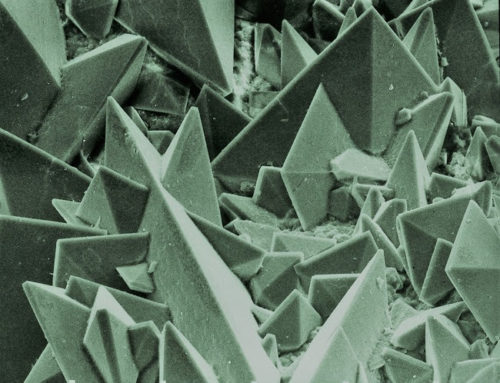If you are new to any of the foods below, you are in luck! Here are 6 new ideas for increasing the nutrient density in your diet. They also happen to be delightful and easy on the palate, so here’s to your health!
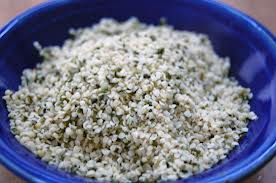 Hemp Seed– There are over 10 grams of protein for every 3 tablespoons of these little seeds, and they pack a nutritional punch beyond what I expected! Packed with nutrients galore and minerals too, each serving contains 110% of the Recommended Dietary Average (RDA) for manganese, 45% of the RDA for magnesium, 20% of the RDA for zinc, and 45% of the RDA for phosphorus. The iron content in hemp seed is 20%, which makes it a great addition to your diety, especially if you are a vegetarian. For breakfast, add it to a smoothie, cereal, oatmeal or yogurt. Sprinkle the seeds on your salad at lunch, or use it in your pasta dishes for added texture and protein.
Hemp Seed– There are over 10 grams of protein for every 3 tablespoons of these little seeds, and they pack a nutritional punch beyond what I expected! Packed with nutrients galore and minerals too, each serving contains 110% of the Recommended Dietary Average (RDA) for manganese, 45% of the RDA for magnesium, 20% of the RDA for zinc, and 45% of the RDA for phosphorus. The iron content in hemp seed is 20%, which makes it a great addition to your diety, especially if you are a vegetarian. For breakfast, add it to a smoothie, cereal, oatmeal or yogurt. Sprinkle the seeds on your salad at lunch, or use it in your pasta dishes for added texture and protein.
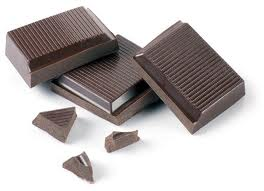 Chocolate– No need to sneak a treat in secret! Here is your permission to eat chocolate right out in the open. Chocolate has been made for over 3000 years all over the world– particularly in Central and South America. Not all chocolate is alike; dark chocolate appears to have the highest nutrient density due to its high cocoa content. This provides a rich source of epicatechin and callic acid, both of which have cardioprotective properties. These properties have been shown to decrease the oxidation of LDL cholesterol– the bad stuff. Dark chocolate has also been said to reduce the possibility of a heart attack when consumed regularly and in small amounts. Recent research has shown that chocolate also boosts cognitive abilities. Scientific evidence has suggested that dark chocolate can help reduce blood pressure in both overweight and normal adults.
Chocolate– No need to sneak a treat in secret! Here is your permission to eat chocolate right out in the open. Chocolate has been made for over 3000 years all over the world– particularly in Central and South America. Not all chocolate is alike; dark chocolate appears to have the highest nutrient density due to its high cocoa content. This provides a rich source of epicatechin and callic acid, both of which have cardioprotective properties. These properties have been shown to decrease the oxidation of LDL cholesterol– the bad stuff. Dark chocolate has also been said to reduce the possibility of a heart attack when consumed regularly and in small amounts. Recent research has shown that chocolate also boosts cognitive abilities. Scientific evidence has suggested that dark chocolate can help reduce blood pressure in both overweight and normal adults.
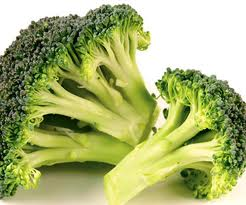 Broccoli- Broccoli is a member of the cruciferous vegetable family and contains several nutrients that none of us should be without. The dark green color is our first indication that the nutrient value is high. Broccoli also has high fiber, vitamins C and A and selenium, but there is more! Broccoli contains a compound called Diindolemethane or DIM which helps to convert dangerous estrogen metabolites into safer metabolites, decreasing risk for breast cancer. DIM is also a potent modulator of the innate immune response with anti-bacterial, anti-viral and anti-cancer activity. In addition to DIM, broccoli has been found to possess glucoraphanin which converts into sulforaphane– a potent anti-cancer compound. Broccoli is also an excellent source of indole-3-carbinols, which appear to boost DNA repair and help to block the growth of cancer cells.
Broccoli- Broccoli is a member of the cruciferous vegetable family and contains several nutrients that none of us should be without. The dark green color is our first indication that the nutrient value is high. Broccoli also has high fiber, vitamins C and A and selenium, but there is more! Broccoli contains a compound called Diindolemethane or DIM which helps to convert dangerous estrogen metabolites into safer metabolites, decreasing risk for breast cancer. DIM is also a potent modulator of the innate immune response with anti-bacterial, anti-viral and anti-cancer activity. In addition to DIM, broccoli has been found to possess glucoraphanin which converts into sulforaphane– a potent anti-cancer compound. Broccoli is also an excellent source of indole-3-carbinols, which appear to boost DNA repair and help to block the growth of cancer cells.
Whatever you do, do not boil your broccoli, or the above benefits will quickly disappear. Boiling broccoli for 5 minutes reduces the levels of anti-cancer compounds by 20-30%, and 10 minutes of boiling reduces benefits by 40-50%. Steaming and stir-frying have no significant effect on the important plant compounts that are so protective. Remember that low heat is best for preserving the nutrients in all of your vegetables!
 Berries– Small, fleshy and beautifully colored, berries bossess some of the most nutrients of all of the the plant foods. The colors of most berries are due to plant pigments called polyphenols such as anthocyanins, tannins and flavonoids, which are mainly found in the seeds and the skins. The pigments of berries give them their high antioxidant levels. Some call berries ‘superfoods’ because of their oxygen radical absorbance capacity (ORAC) which basically means that they contain large amounts of antioxidants.
Berries– Small, fleshy and beautifully colored, berries bossess some of the most nutrients of all of the the plant foods. The colors of most berries are due to plant pigments called polyphenols such as anthocyanins, tannins and flavonoids, which are mainly found in the seeds and the skins. The pigments of berries give them their high antioxidant levels. Some call berries ‘superfoods’ because of their oxygen radical absorbance capacity (ORAC) which basically means that they contain large amounts of antioxidants.
Berries also have a low glycemic index, meaning that they do not spike a glucose and insulin response. This helps to combat obesity, metabolic syndrome, cardiovascular disease, and other diseases triggered by high insulin.
The phytochemicals in berries possess anthocyanins, pterostilbenes and ellagic acid, which have been shon to lower rates of cancer and cardiovascular disease. So, berries = cancer protection.
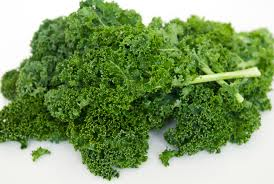 Kale- Every day, I encourage patients to get more kale into their diets. With its vibrant green color, it looks healthy– and it is! Kale has more iron and calcium than beef. It is high in vitamins A and C, fiber, antioxidants, anti-inflammatories, and it is another one of nature’s cancer fighters. It belongs to the Brassica family of foods , which are also called cruciferous. If you bisect the stalk of all of these plants, there is a faintly visible cross, giving the name ‘cruciferous’. Kale is a powerful inducer of phase I detoxification. We all need more support in this area as our environment becomes more toxic. If you’re squeamish about kale, try it in a smoothie first and add some great tasting protein powder to sweeten it a bit. Or try it chopped and ‘massaged’ in a salad (dressing is key), and find a great recipe for kale chips– olive oil and salt… mmmm.
Kale- Every day, I encourage patients to get more kale into their diets. With its vibrant green color, it looks healthy– and it is! Kale has more iron and calcium than beef. It is high in vitamins A and C, fiber, antioxidants, anti-inflammatories, and it is another one of nature’s cancer fighters. It belongs to the Brassica family of foods , which are also called cruciferous. If you bisect the stalk of all of these plants, there is a faintly visible cross, giving the name ‘cruciferous’. Kale is a powerful inducer of phase I detoxification. We all need more support in this area as our environment becomes more toxic. If you’re squeamish about kale, try it in a smoothie first and add some great tasting protein powder to sweeten it a bit. Or try it chopped and ‘massaged’ in a salad (dressing is key), and find a great recipe for kale chips– olive oil and salt… mmmm.
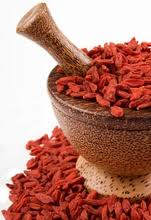 Goji Berries-Goji berries grow mostly in Southeastern Europe and Asia and are rapidly gaining attention for their nutrient and antioxidant content. Goji berries have all of the 18 amino acids as well as large doses of vitamin A (beta carotene), B1 (Thiamine), B2 (Riboflavin), B6 (Pyridoxine) and vitamin E. Not only are they nutrient dense, but these delicious and chewy berries contain more vitamin C by weight than any other food on Earth! Goji berries have 10% of the RDA for calcium, 24% of RDA for potassium, 100% of RDA for iron (more than spinach), 18 % of RDA for zinc, 91% of RDA for selenium, 100% of RDA for Riboflavin (B2) and 163% of RDA for vitamin C. These little berries also have beta carotene and zeaxanthin– the richest edible plant source knon for this antioxidant– which is protective for the eyes and nervous system. Add them to your oatmeal, to your granola, to your trail mix, to your rice dishes, or just eat them right out of your hand!
Goji Berries-Goji berries grow mostly in Southeastern Europe and Asia and are rapidly gaining attention for their nutrient and antioxidant content. Goji berries have all of the 18 amino acids as well as large doses of vitamin A (beta carotene), B1 (Thiamine), B2 (Riboflavin), B6 (Pyridoxine) and vitamin E. Not only are they nutrient dense, but these delicious and chewy berries contain more vitamin C by weight than any other food on Earth! Goji berries have 10% of the RDA for calcium, 24% of RDA for potassium, 100% of RDA for iron (more than spinach), 18 % of RDA for zinc, 91% of RDA for selenium, 100% of RDA for Riboflavin (B2) and 163% of RDA for vitamin C. These little berries also have beta carotene and zeaxanthin– the richest edible plant source knon for this antioxidant– which is protective for the eyes and nervous system. Add them to your oatmeal, to your granola, to your trail mix, to your rice dishes, or just eat them right out of your hand!


